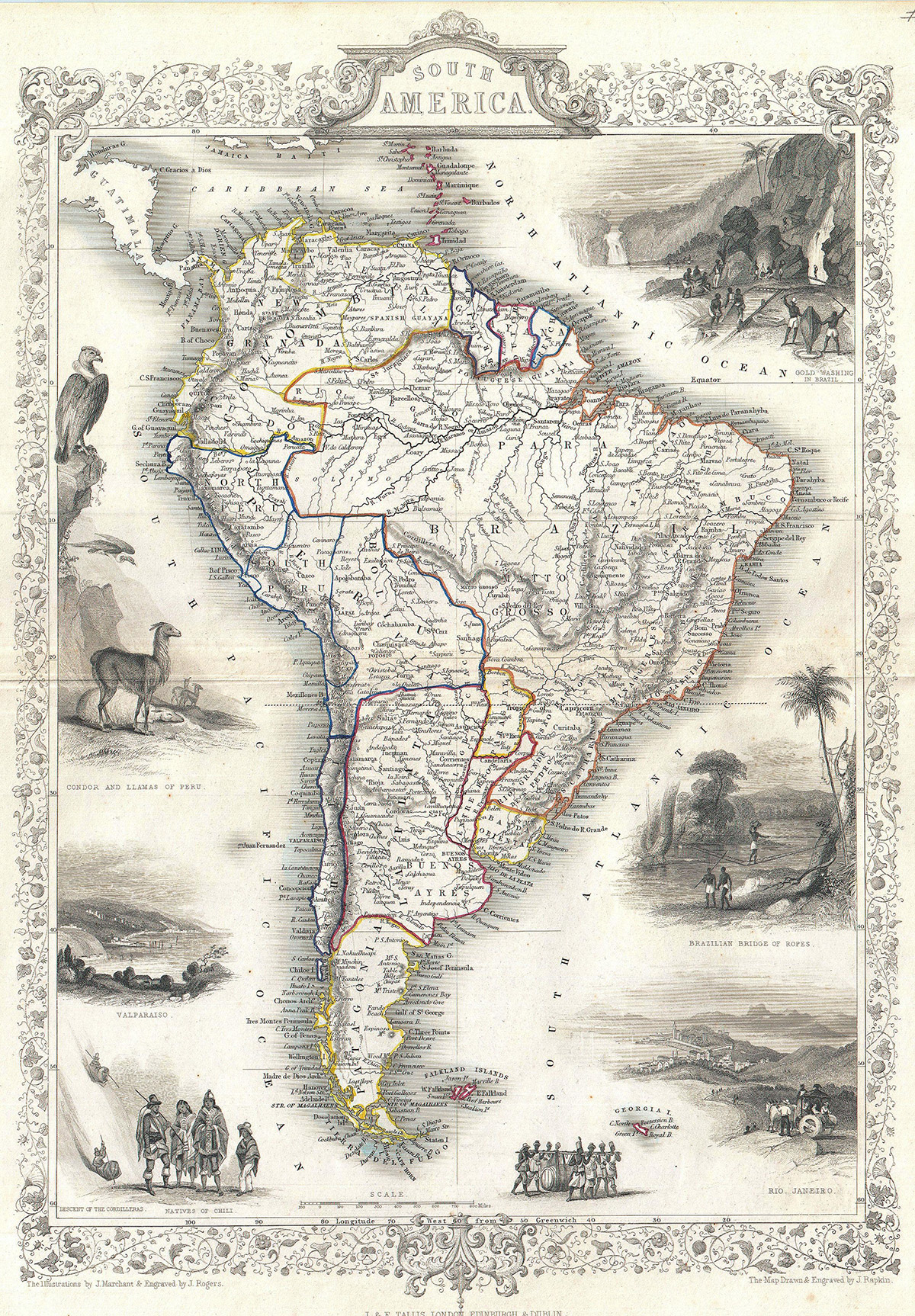Latin America:

Acapulco:
Mexico’s premier resort, centered on a historic port for Pacific trade, once with China before the Europeans arrived.
Panama & its Canal:
A nation created to provide transit between the world’s oceans is now a rapidly developing land with a remarkable variety of cultures and natural heritage.
Peru:
Land of the Sun Gods where mysteries are still alive, including the Macchu Picchu , the Nazca Lines and recently discovered cities of Tucan & Chimayo
Lima and modern Peru:
the nation built upon the remains of former empires and peoples
Brazil:
the Nation of the Future: which has arrived with vast cities and a booming economy, matched with persistent poverty and ecological destruction.
Rio de Janiero:
City of the Carnival: the iconic city of Brazil from its native origins to its current social strife and vibrant future as Olympic host and oil boom town
Bahia: Soul of Afro-Brazilian culture:
the tropical state that was once the center of slave plantations, now at the heart of the musical life of Brazil and carnival.
Manaus:
City at the center of the Amazon: The boom & bust urban imposition into the rainforest, with teeming markets and a lush nightlife
Amazonia:
Evolution & Nature: the formation the world’s largest river system and its astounding variety of life under assault from humans and climate change
Amazonia: Native peoples and their fate:
the many peoples of the vast Amazon include lost cities and uncontacted natives, amidst a sea of encroaching ‘cabaclos’ – mixed race Brazilians
Scenic Ports of Chile:
Gateways into the Fjordlands
Introduction to Puerto Montt, Puerto Chacabuco and Laguna San Raphael
with their mixed native and European cultures, and the effects of the recent earthquake.
Chilean Fjords: Geology & Wildlife
This vast wilderness ranges from glaciers and volcanos to the unique rock structures of Torre de Paine. Sea and land life is abundant with unique species such as the steamer duck, huanaco mountain llama and the magnificent Andean condor.
Patagonia:
the most southern wilderness in the Americas, with Argentina and Chile sharing the lush island of Tierra del Fuego and the towering peaks of the Andes. This ‘end of the world’ has many unique flora & fauna adapted to its extreme conditions.
Natives Peoples of Patagonia:
The Mapuche people of Chile remain as a strong culture whereras the Ona of Tierra del Fuego and other aboriginal Patagonians are only a historic memory.
Why do some native peoples thrive while others vanish?
Punta Arenas:
the Southern port of Chile This small city in the Straits of Magellan was once a vital port of refuge for sailors around Cape Horn and explorers to Antarctica, including the rescue of the Shackleton Expedition. Wrecks of clipper ships still litter the harbor while penguins play along its shores.
The Straits of Magellan and the Falklands:
Contested Islands Introduction to the historic explorations and contemporary conflicts in Tierra del Fuego and the Falklands. Chile, Argentina and Great Britain have long disagreed over boundaries, yet now agree to forego conflict of arms even as new finds of oil reserves drive old issues.
Ports of Argentina:
Puerto Madryn and Buenos Aires
The vast plains of Patagonia border the Atlantic at Puerto Madryn, a Welsh settlement which overlooks whales calving in the waters off the Valdes Peninsula. The capital Buenos Aires is a contrast of European elegance and lively culture of gaucho heritage and tango nightlife.
Montevideo & Punta del Este:
Capital & Resort Cities of Uruguay
The elegant yet faded capital city features a historic port district and salvaged remains of the battleship Graf Spee, now a wreck in the Rio Plata. Punta del Este is the modern ocean resort where both Uruguaians and Argentines play day and night.
The Graf Spee:
the dramatic fate of the German battleship scuttled off Montevideo in 1939, a forebearer of the tragedies of World War II, now a dangerous wreck marked by a hazard buoy.